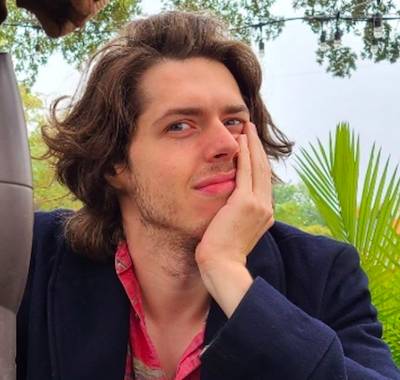“Nosferatu” Production Designer Craig Lathrop on Creating Count Orlock’s Gothic World
Writer/director Robert Eggers’ Nosferatu continues his streak of delivering singular, stunning cinematic spectacles that have ranged in scale from the terrifyingly intimate (The Witch) to psychotically intimate (The Lighthouse) to the rousingly epic (The Northman). With Nosferatu, Eggers has found perhaps the perfect material for his sensibilities—rich in detail, steeped in myth, and drenched in pathos, with each sequence building upon the last in this delicious gothic nightmare. Aiding Eggers’ efforts was production designer Craig Lathrop, who helped build a cold and lonely world in which characters can get as lost in their physical reality as they can in their own heads.
In the case of Count Orlock (Bill Skarsgård), we’re dealing with a creature out of place and out of time, a wondrous grotesque haunting his decaying castle. It’s where young, opportunistic Thomas Hutter (Nicholas Hoult) goes to strike a deal with the Count. As the classic tale goes, Hutter’s world turns upside down, as does his beloved wife, Ellen (Lily-Rose Depp), who becomes an object of the Count’s obsession, less so his love.
It’s another chilling achievement from Eggers, with whom Lathrop has worked on all his films. Once again, they created a world that feels as real as the slick grime on the castle walls but as otherworldly as the Count’s terrifying hold on the people he encounters. Recently, Lathrop spoke with The Credits about recreating Wisborg, Germany, in the 1880s and building a world of shadows for the auteur.
What did you find most fulfilling about creating this world? What was new for you?
The streets. They’re probably the largest single sets I’ve ever done. They were so tall and so many blocks of streets. I wanted all the buildings to have their own personality and individuality, so it’s a lot of detail. I was able to grade the streets so people were going uphill when they should be, whenever I wanted them to feel like they had extra effort to get someplace. But then I also got to do a castle. The monastery was not a small set by any means, but for one of the smaller sets, that was exciting to do, primarily because I talked people into doing that style of the monastery when I wasn’t sure how I was going to get it painted.
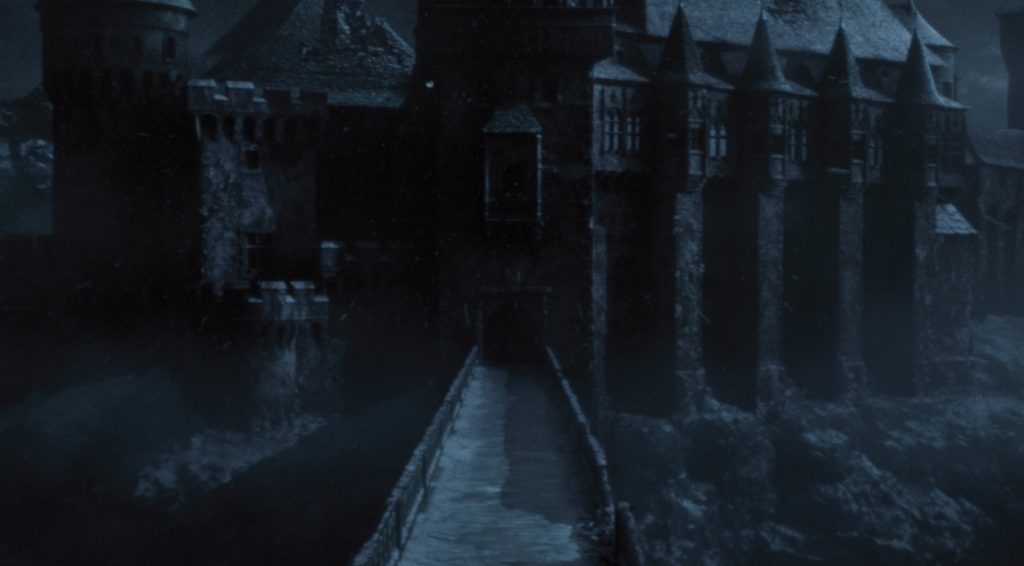
Credit: Courtesy of Focus Features / © 2024 FOCUS FEATURES LLC
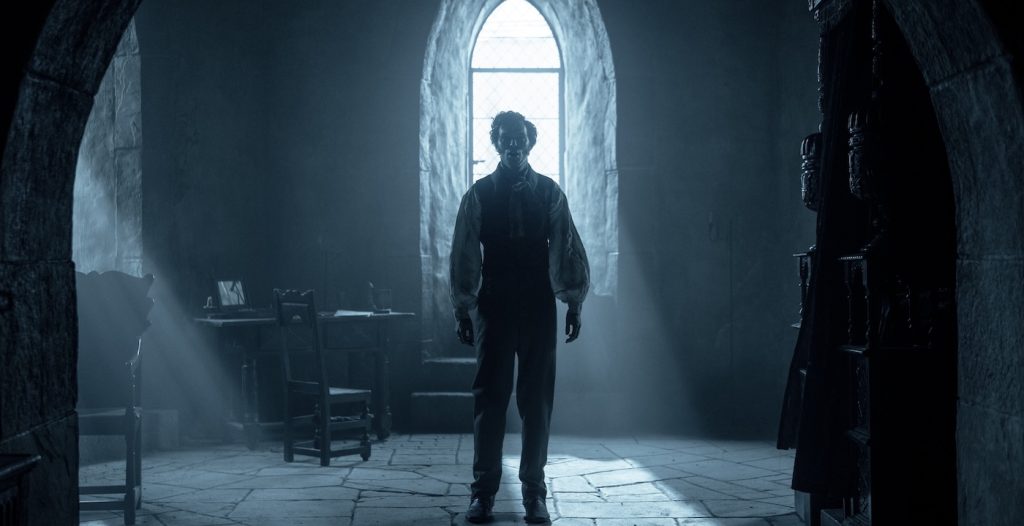
What was the solution?
The real solution was a company in Italy. They have a product with a terrible name called Tattoo Wall. They print on a very thin, flexible membrane. When you put it on uneven surfaces and around corners, it stretches a little and has a more forgiving nature. It’s thin enough that the texture of the plaster underneath it actually transfers through, so the wall looks real. Then, there’s a proprietary flat matte covering that goes over it as well.
On top of that, we did a little bit of painting. It pushed a lot of the effort onto graphics. We used a lot of actual frescoes from which we sourced imaging, but the ceiling was bespoke. We had to design and push things around to make that work. I thought it turned out great, but I wasn’t sure how I was going to do it. I originally thought maybe we could afford to paint it. Even then, if we could afford it and if we had the time – which we didn’t have either – it’s a big task. I have great scenic artists, but it’s asking them to recreate a 15th-century masterpiece.
Did you want to use any building techniques from that time period? Was it a combination of the past and present?
It’s always a combination, depending on what you need to do. On this one, we didn’t have as much where I’m trying to figure out how to recreate the old styles in the way that we build sets, because most of the stuff is straightforward in terms of set building. You’re still asking carpenters to build things that aren’t plumb or square, and that’s always challenging. For instance, the tiles in the castle are basically castle tiles. That’s what they call them. They’re thick terracotta tiles. We put that on a sand bed, so it was uneven. We painted a lot of them as well. We stenciled them so they would look like medieval tiles. They were actually not dissimilar from the tiles they would’ve used in the day. The grips weren’t so happy with me because there was nothing they could roll on, but it would’ve looked terrible if I had done it differently.
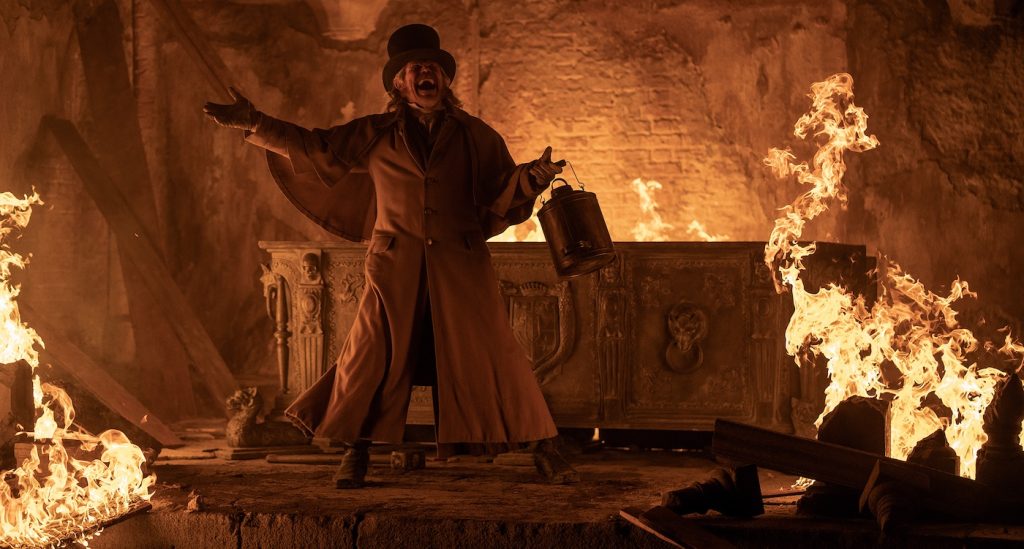
Where did your imagination immediately go when you first read the script and thought about the castle?
The main thing is that it should be not just unkempt – it should be falling apart. It should be deteriorating, much like Orlock. You have a few items, more inside the tower room, which was the Hutter bedroom. I was thinking of the castle as being 100 or 200 years old. I looked at the 16th century as if it had just sat there for 150 years. It couldn’t be what we were seeing, these beautifully whitewashed, spit-shined old castles. They are gorgeous, but they look like they’re ready for tourists to visit.

Credit: Courtesy of Focus Features / © 2024 FOCUS FEATURES LLC
Orlock is not a creature with many possessions, but what items in the house did you think said a lot about him?
Everything was examined. Some of the stuff we made – certainly his ring, the little chest he opens up to get the coins out to give to Hutter when they’re signing the contract, the contract itself and all of the paperwork, the sarcophagus, the carriage. We built the carriage, too. We call it the ghost carriage. There were some little details that you’ll never see.
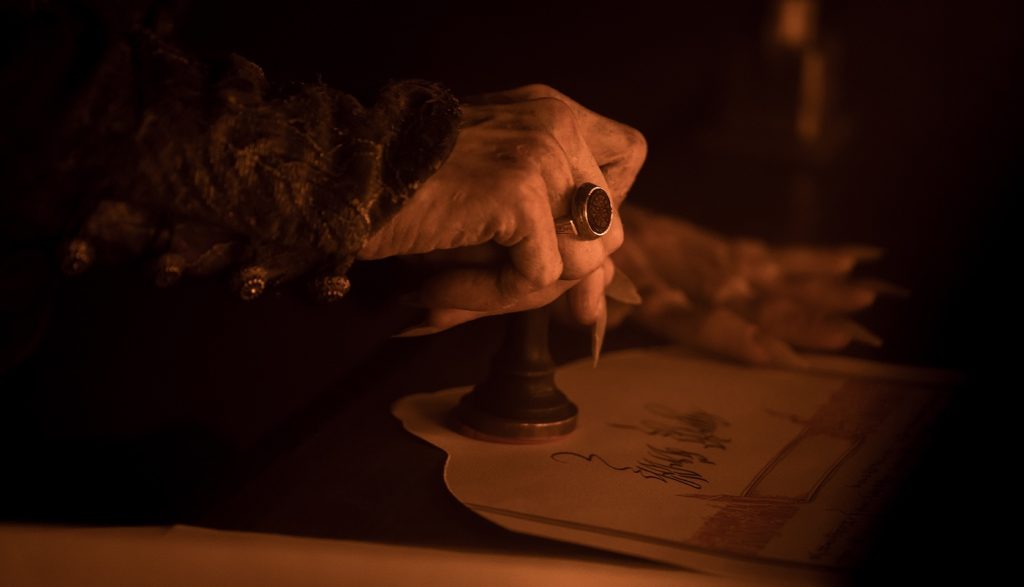
Credit: Aidan Monaghan / © 2024 FOCUS FEATURES LLC
Any other details you hope audiences catch on repeat viewings?
On the carriage, there are bas-reliefs of a giant battle, which is basically a Vlad the Impaler battle. You can’t see it all, but there it is. There were a lot of areas where I knew it would be unlikely that we would catch it, but I knew the actors would see it.
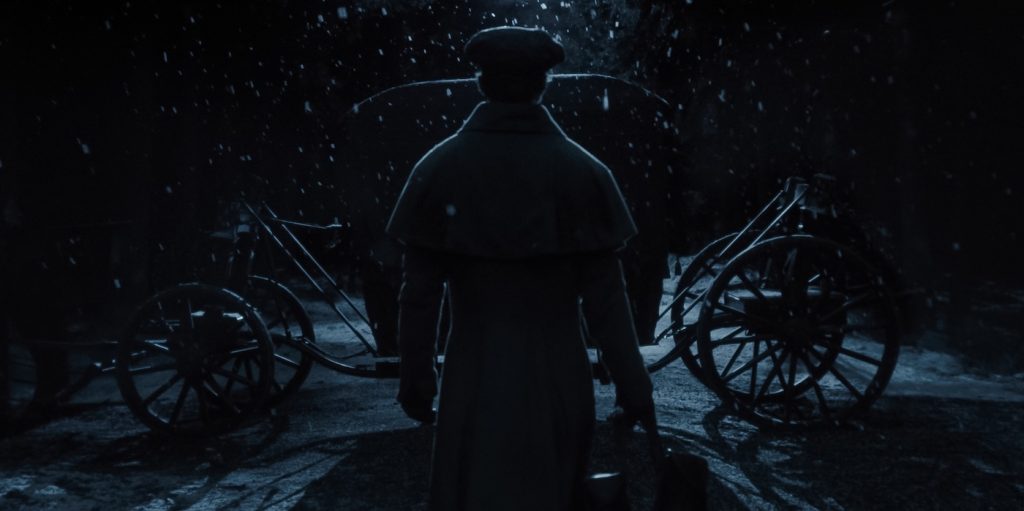
Robert Eggers initially wanted to make Nosferatu more expressionistic, but over time, he grounded it. For the both of you, how else did the vision evolve?
By the time we started, we decided to make this world as real as possible, as authentic to the period as possible. I mean, you can never be completely authentic. The idea for him, which I agree with, is that the more supernatural events going on, the harder they hit if the world is real. I started off with the period that we were talking about as being the base level. I had to do a lot of research to try to find all the little bits and bobs and learn more about the architecture, the props of the period, and the lighting, which is where you start. On top of that, you start doing all the regular design ideas where you’re thinking about the character and the emotional beats of the film and how you would design a contemporary film – only now are you doing it as if contemporary is 1838. You don’t know anything that happens after it.
Nosferatu is in theaters now.
For more on Nosferatu, check out these stories:
“Nosferatu” DP Jarin Blaschke on Giving Robert Eggers’ Masterful Vampire Tale Its Bite
“Nosferatu” Review Round-Up: Robbert Eggers Masterful Horror Sinks Its Teeth Into You
Featured image:Willem Dafoe stars as Professor Albin Eberhart von Franz in director Robert Eggers’ NOSFERATU, a Focus Features release.
Credit: Courtesy of Focus Features / © 2024 FOCUS FEATURES LLC


